Make your own children’s watercolor paints from plants!
As, I learned and grew more into natural, toxin-free, and sustainable living; I was quite set on creating alternatives to traditional, non-natural toxic paints for my artwork. I wasn’t always an artist, I reconnected to this dormant artist within me four years ago, and since then I have only been working with my own natural and non-toxic handmade watercolors. For obvious reasons, I’m not thrilled when it comes to store-bought children’s arts and crafts supplies. I decided to explore and do my best at finding the best alternative for many of these supplies and making them at home with my son. Not only is it safe for him, but we also have a great time doing something together besides playing and cooking!
Making paints from natural resources is an excellent way to introduce your child to the beautiful world of color. Not only is it meditative, therapeutic, and rich for your child, but also calming for you. Before you start making colors and painting with your child, take time to delight in the colors of nature around you. Bedazzled by the incredibly amazing and vibrant color palette of nature, the extraordinary number of shades and tones in your visual path. Notice the effect nature’s sight, smell and colors have on you and your child. Connect to the natural world around you and open up your awareness of color as part of your life!
As Maxime Lagacé said, “ By discovering nature, you discover yourself”!
I will not go too deep into the philosophy of nature and its effects on us because this post is all about to share with you my method of making sustainable non-toxic watercolors for children.
How to make natural plant-based watercolors for children
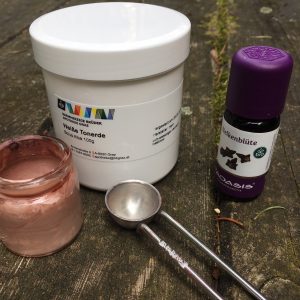
Kaolin and Clove oil
The great thing about this DIY recipe for homemade children’s paint is that you primarily require only 3 ingredients.
Ingredients required
1. Natural Clay: Kaolin or white cosmetic clay (weiß tonerde)
2. Plant material of your choice and availability (flowers, berries, leaves, bark, etc), organic kitchen waste or you could simply use store-bought powdered herbal pigments (beetroot, spirulina, etc.)
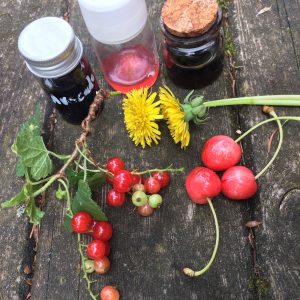
Natural sources of pigment
3. Water
4. Glycerine (food grade optional)
5. Vinegar (optional)
6. Essential oil (optional)
This way, not only do you know what goes into your paints, but you can change the ingredients you don’t have. For example, if you don’t have Kaolin, you can use arrowroot powder or corn starch. For pigments, I like to extract them from what’s around in our backyard, kitchen, or local park, rather than buying powdered herbs from a store. Store-bought botanical pigments could be rather an expensive affair! Besides, the idea is to go foraging for pigment sources with your child and getting them to connect with the natural world!
Kaolin is the best clay to use for making homemade, non-toxic children’s paint. Firstly, kaolin clay is fairly inexpensive and, secondly being white it won’t change the color of your paints. Not only Kaolin acts as a filler but it also thickens the paint. Once dried it re-wets easily too.
Making process
It is best to extract pigments from withering flowers, fallen berries, leaves, herbs whatever you can find in nature, and knowing that they are not poisonous. Next, crush the plant material using pestle and mortar, this task can essentially be designated to the little helpers! Then add a minimum amount of hot water to pull out the dye. Allow the crushed matter to sit for a while before straining it through a sieve and putting it to use.
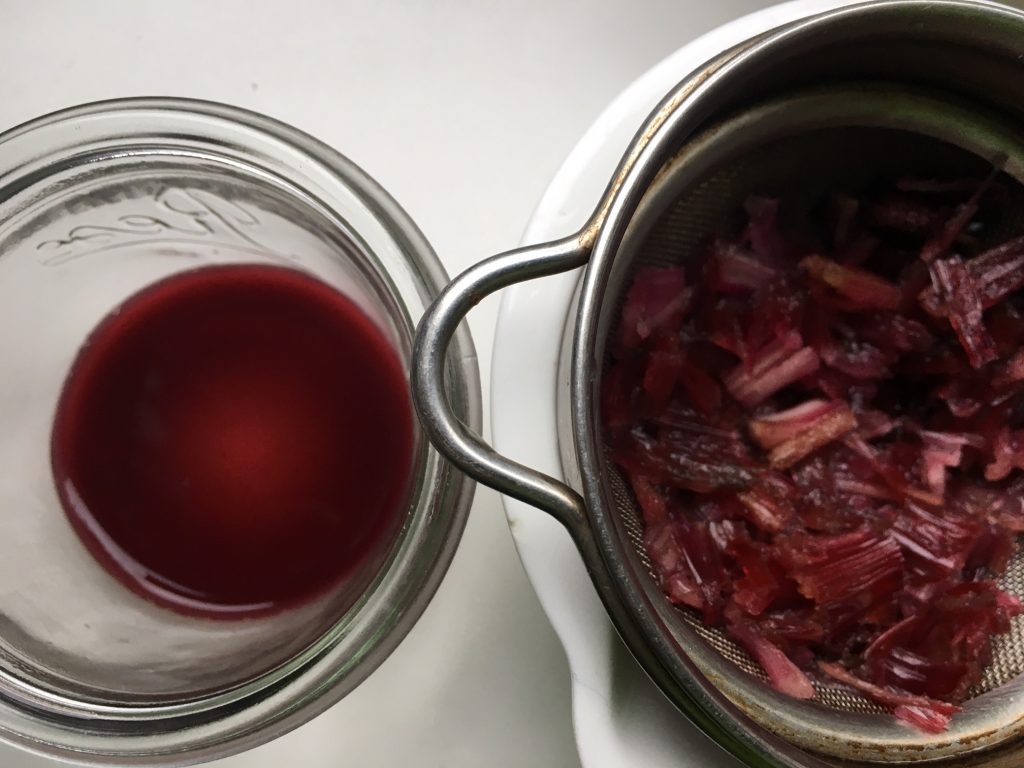
The red dye extracted from Red chards
To 1/4 tsp of clay add concentrated freshly extracted dye (approximately 3ml). Stir the contents well avoiding lumps to be formed. If the color is weak add more extract. Just experiment and adjust the amount of the dye as you like. To make the paint more spreadable and soft add a couple of drops of glycerine to your mix. You could also add a drop or two of white vinegar or essential oil (thyme or clove oil) as a preservative. This step can easily be done by children, who I am sure will thoroughly enjoy it!
Not only is this a safe and fun way to keep children entertained and busy, but it provides much-needed creative and developmental stimulation as well. Such as this flower made by my son using the naked stalks of redcurrants after we had finished removing the berries for making marmalade and some color.
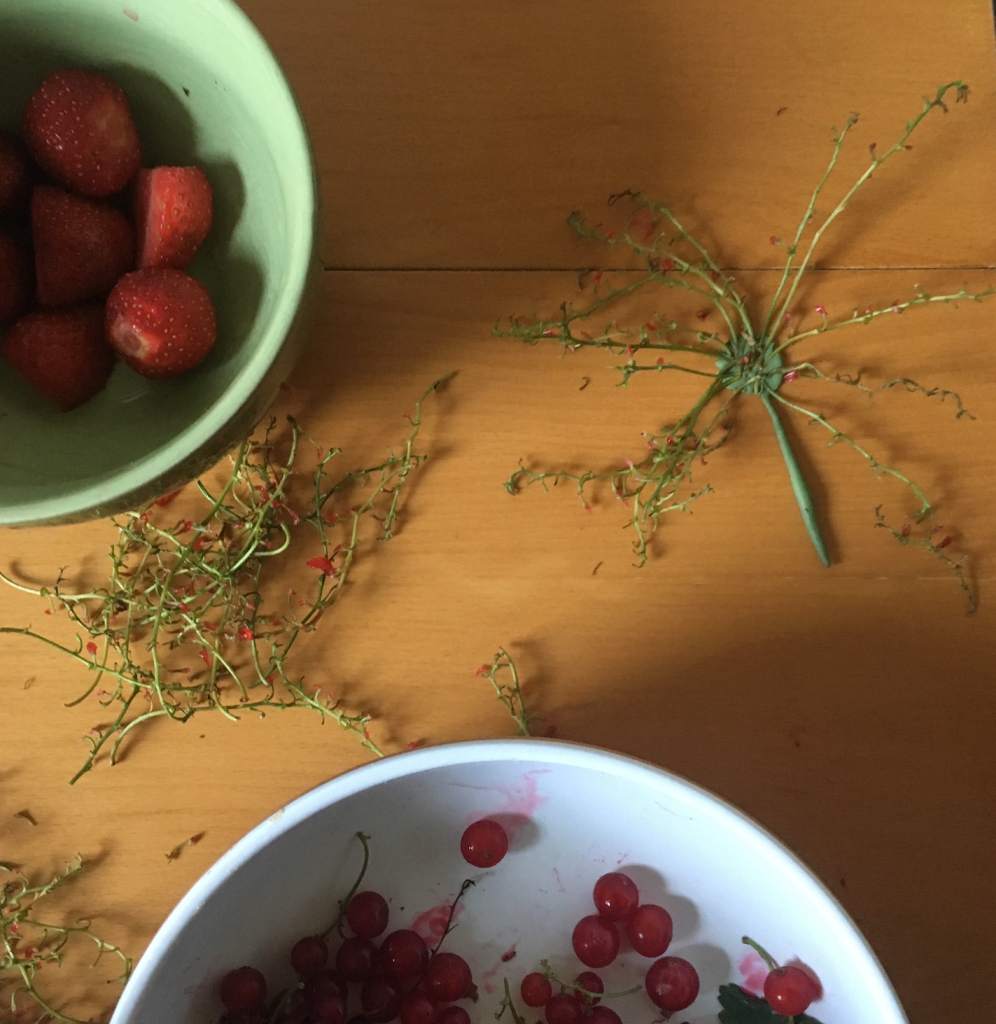
Creative play
Once the colors are ready it’s time to paint with them! If your child is very young (2-3years), begin by introducing only a single color. This gives the child time to explore the world of color. Adding in a second color at a later stage becomes a magical experience for the child. If too many colors are added too soon, the painting will become completely brown or gray. This does not serve the child’s learning. I am speaking from experience and have understood this concept from Rudolf Steiner’s philosophy.
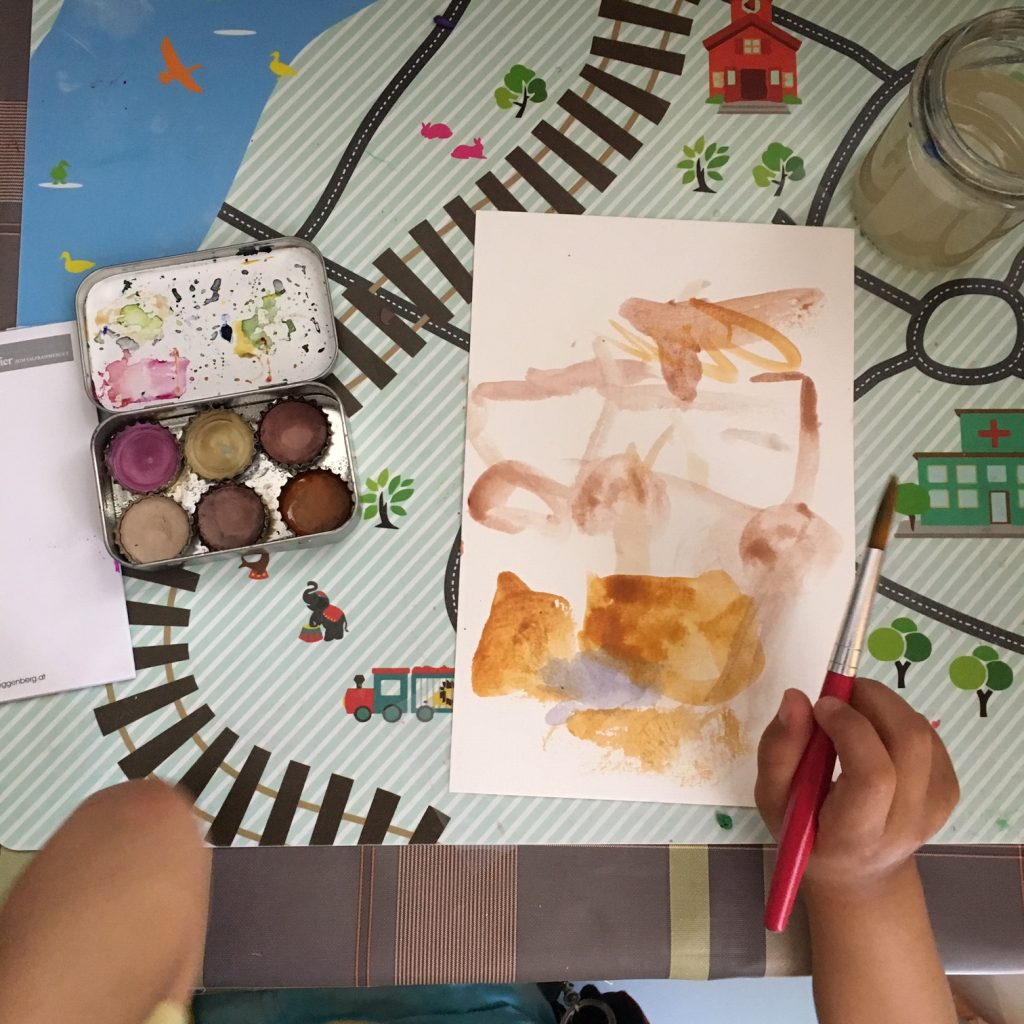
My son’s painting using two colors: Flame of Forest and Avocado
Not only are these watercolors great for children but even adults can try painting with them too. I am sure you are going to enjoy it!
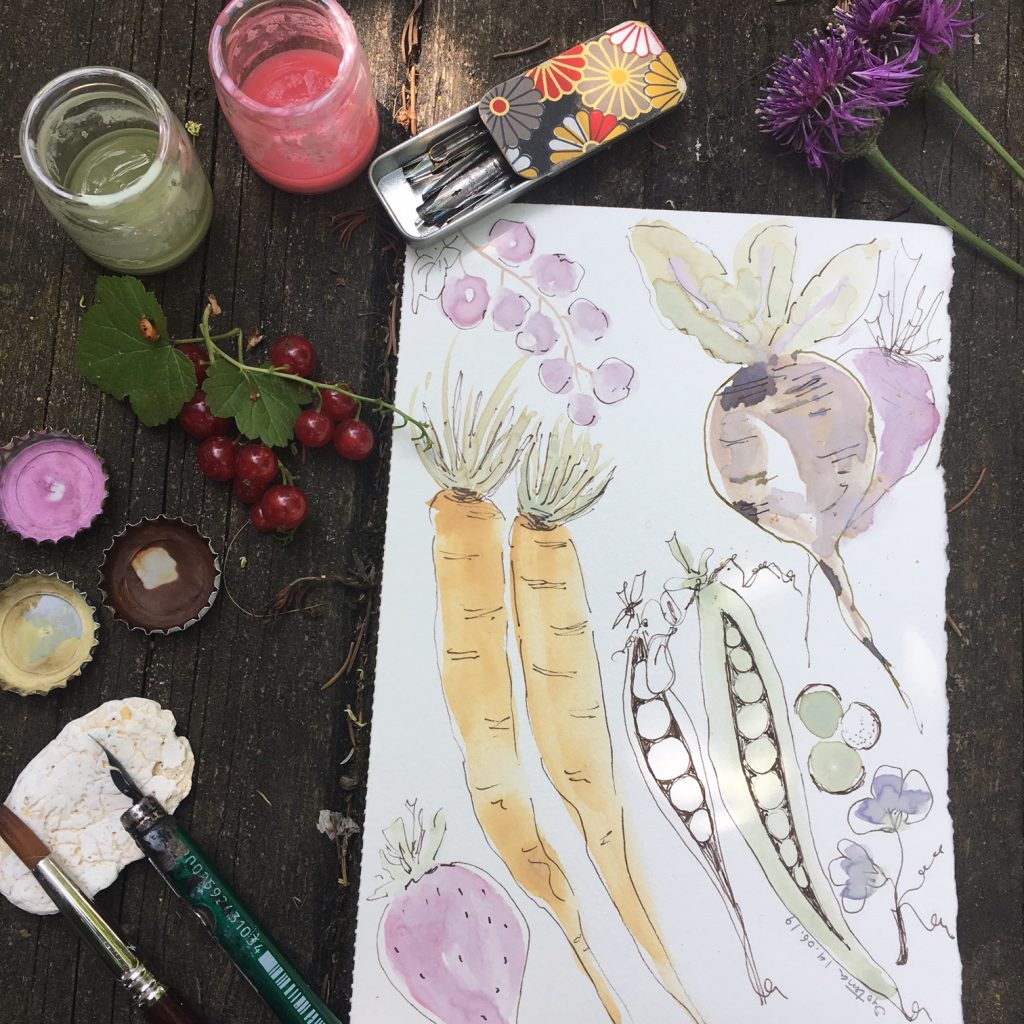
Painted using dye extracts of redcurrants, spinach, marigold, and flowers of the flame of the forest
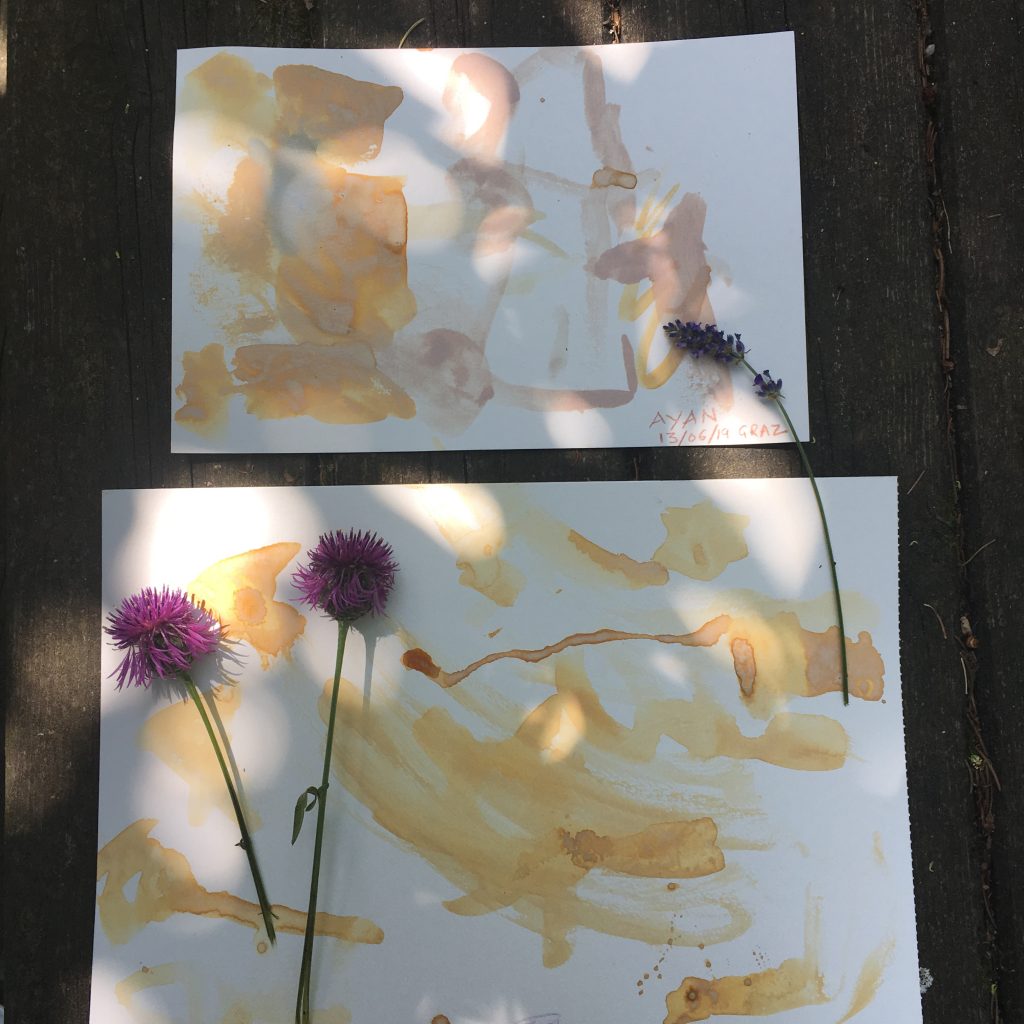
“Art has the role in the education of helping children become like themselves instead of more like everyone else. “-Sydney Clemens
If you want to learn more …
… enroll in my online course exploring the traditional process of making watercolor paints from pure pigments.
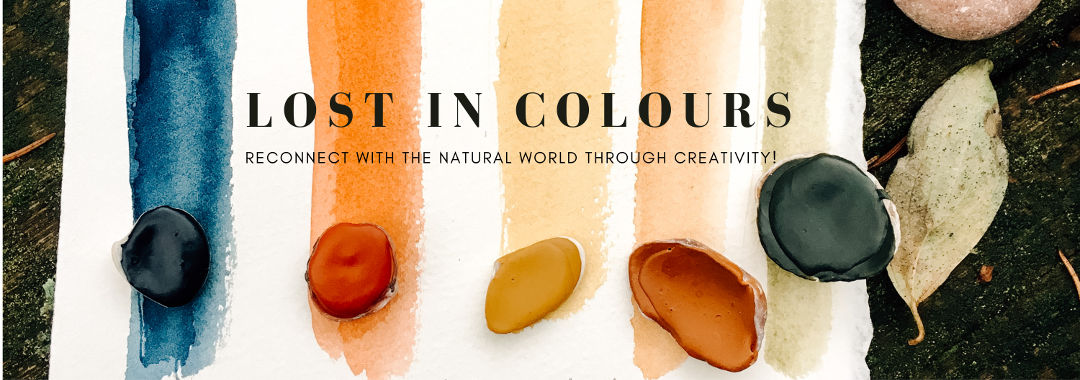
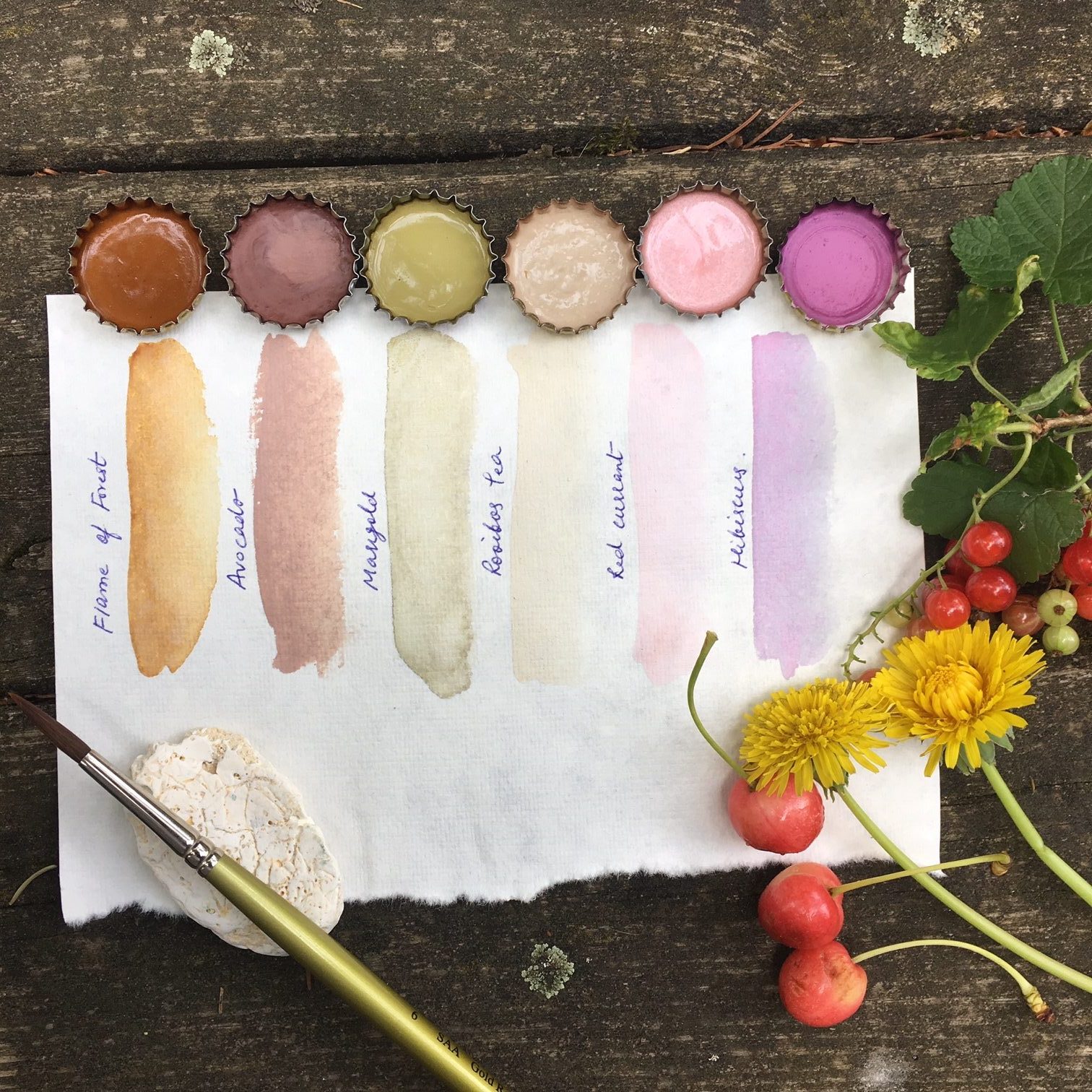
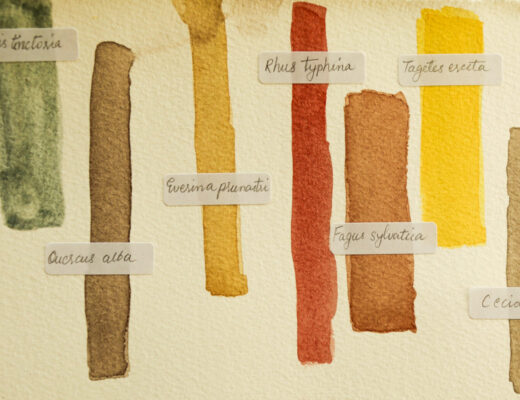
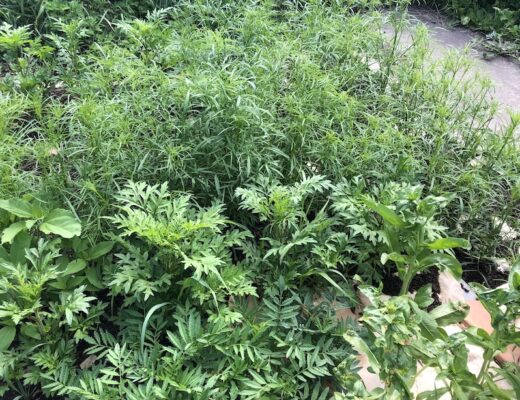
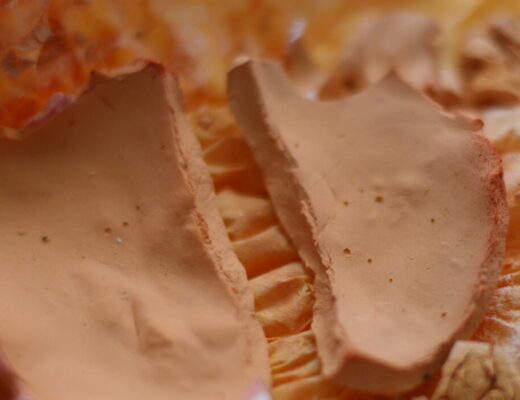
No Comments